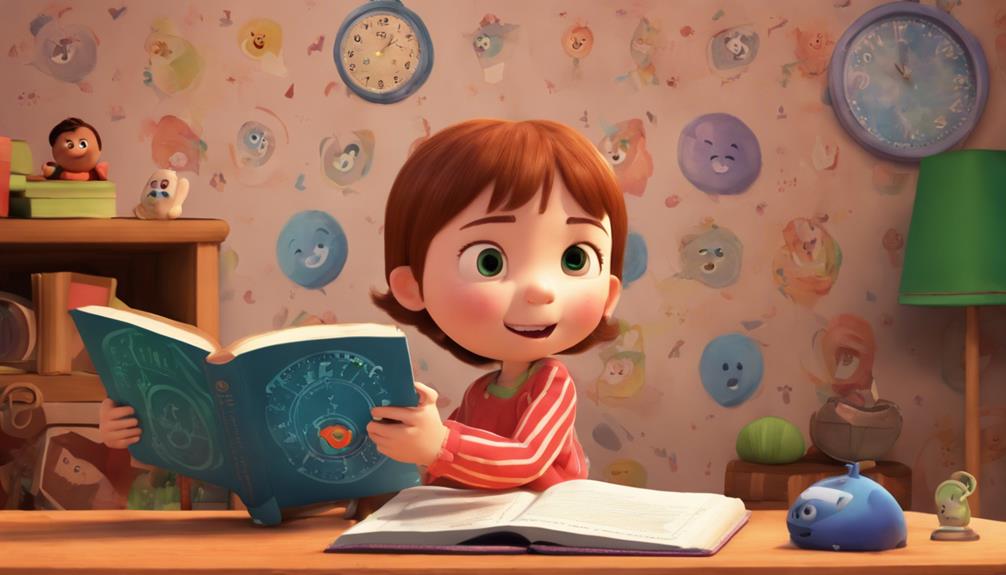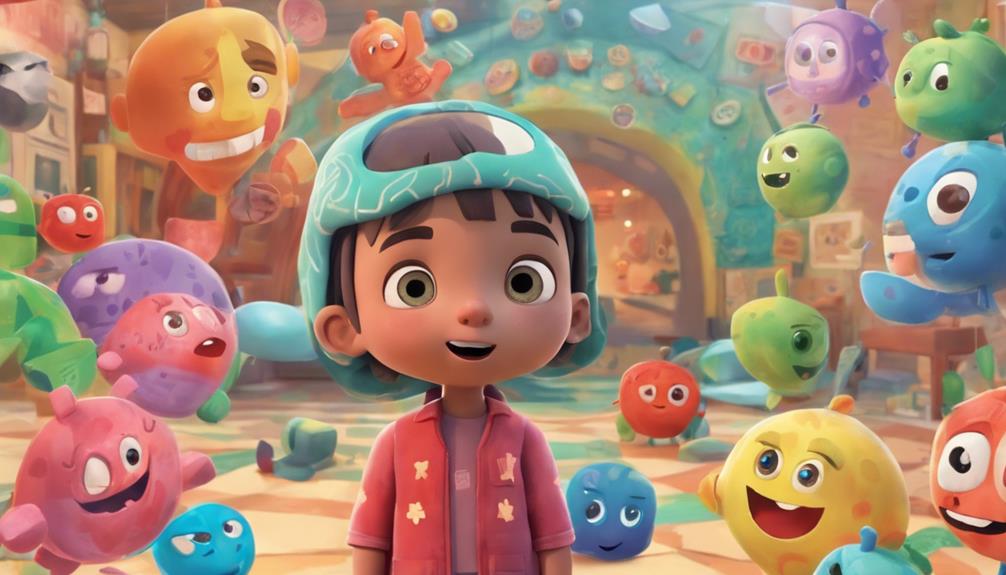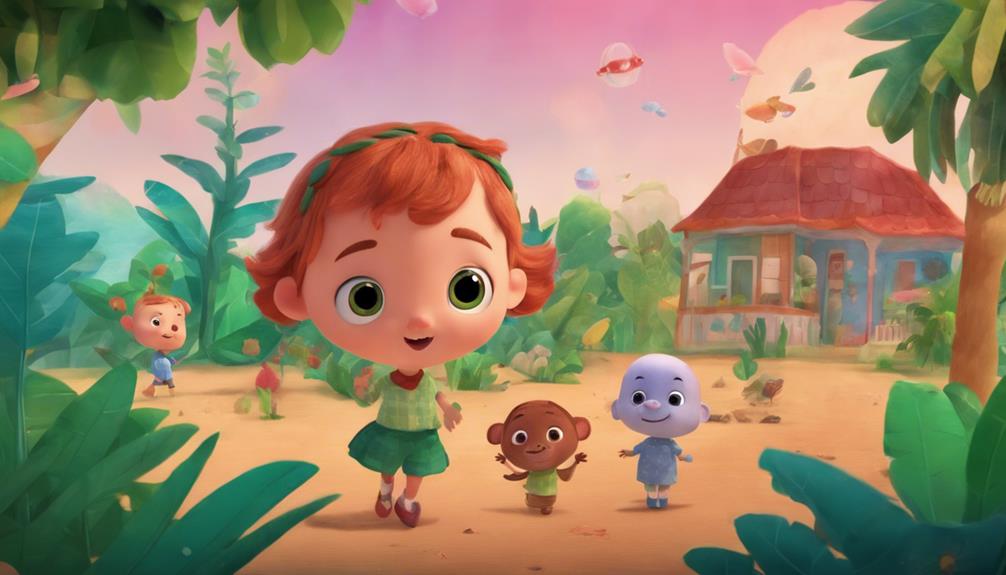Allegations of subliminal messages in Cocomelon have stirred concern. Parents and researchers are examining the show for potential hidden meanings affecting young viewers. Subliminal messaging operates on the subconscious mind without conscious detection. Children's susceptibility to external influences raises questions on hidden cues' impact. Research indicates subconscious messages can influence behavior. Symbolic imagery and repeated elements have sparked interest in decoding hidden symbols. Experts are investigating the effects of covert messages on children's cognitive and emotional development. The debate underlines the need for responsible content creation. For further insights into Cocomelon's subliminal messaging concerns, explore the complexities surrounding children's programming.
The Rise of Cocomelon

The emergence of Cocomelon as a prominent children's entertainment phenomenon has been marked by its rapid ascent in popularity across various digital platforms. With its colorful animation, catchy songs, and educational content, Cocomelon has captured the attention of young audiences worldwide.
However, this meteoric rise has also raised parental concerns regarding potential hidden meanings within the show. Cocomelon's success can be attributed in part to its effective marketing strategies that tap into fundamental principles of child psychology. The show utilizes repetitive songs and simple storylines to engage young viewers, leveraging research on children's preferences for predictability and familiarity.
Allegations of Subliminal Messaging
Allegations have surfaced regarding potential subliminal messaging embedded within episodes of Cocomelon, prompting scrutiny from concerned parents and researchers alike. Parental concerns have been raised over the influence of media on children's development, with some suggesting that subtle messages in the show may have psychological effects on young viewers.
The idea of subliminal messaging revolves around the concept that information is received by the subconscious mind without individuals being consciously aware of it. This raises questions about whether children, who are particularly susceptible to external influences, could be impacted by hidden cues or suggestions in the content they are exposed to.
Studies on subconscious perception have shown that messages perceived without conscious awareness can still influence behavior and attitudes. While the specific nature and intent of any alleged subliminal messaging in Cocomelon remain unclear, the debate highlights the importance of critically examining the media content aimed at young audiences to guarantee it aligns with ethical standards and promotes positive developmental outcomes.
Decoding the Hidden Symbols

Concerns surrounding potential subliminal messaging in Cocomelon have spurred an examination into the hidden symbols present in the show's content. Symbolic imagery within Cocomelon is a topic of interest among viewers and researchers alike. The show incorporates a variety of hidden meanings through subtle cues and symbols that may go unnoticed by the casual viewer.
One prevalent symbolic imagery in Cocomelon is the use of colors. Different colors are often associated with specific emotions or themes, adding layers of meaning to the scenes. For example, warm colors like red and orange may symbolize energy and excitement, while cool colors like blue and green could represent calmness and tranquility.
Furthermore, the repeated appearance of certain objects or animals in the background of scenes may carry hidden meanings. These symbols can evoke specific emotions or ideas, contributing to the overall message of the show.
Impact on Young Viewers
Researchers have been analyzing the potential impact of concealed symbols and subliminal messages in Cocomelon on its young viewers. Concerns have been raised by parents and experts regarding the psychological effects of subliminal messaging on children. Parents worry about the ethical implications of exposing their young ones to content that may contain covert messages influencing their behavior or beliefs.
Studies suggest that subliminal messaging can potentially impact children's cognitive processes and emotions without their conscious awareness. This raises questions about the responsibility of content creators in ensuring that their material is suitable for the intended audience.
The use of subliminal messages in children's programming like Cocomelon has sparked a debate on the potential harm it may cause to young viewers.
As researchers delve deeper into the effects of hidden symbols and subliminal messaging in children's content, it becomes vital for parents to stay informed and vigilant about the media their children consume. Addressing parental concerns and understanding the psychological implications of subliminal messaging on young minds are essential steps in navigating the intricate landscape of children's media.
Controversies and Debunking

The controversies surrounding Cocomelon's alleged subliminal messages have sparked a wave of debunking efforts aimed at clarifying misconceptions and addressing public skepticism.
Accusations of media manipulation and hidden agendas have been prevalent, with concerns raised about the potential psychological effects on young viewers and parental worries regarding the content children are exposed to.
Debunking initiatives have focused on dissecting the alleged subliminal messages in Cocomelon episodes to determine their legitimacy. Experts in child psychology and media analysis have been called upon to provide objective assessments of the content.
While some claims have been debunked as misunderstandings or misinterpretations, others remain under scrutiny.
The debate surrounding Cocomelon's subliminal messages underscores the importance of critical media literacy and responsible content creation. It serves as a reminder for parents to stay informed about the media their children consume and encourages content creators to be transparent about their intentions to alleviate concerns about hidden agendas.
Viewer Reactions and Speculations
Viewers of Cocomelon have reacted with a mixture of curiosity and skepticism towards the alleged subliminal messages, leading to various speculations about the intentions behind the content.
Some viewers believe that the hidden meanings within Cocomelon episodes are intentional, suggesting that the creators may have ulterior motives or agendas. These speculations have sparked online discussions and conspiracy theories regarding the true nature of the popular children's show.
While some viewers dismiss the notion of subliminal messages as mere coincidences or over-analyzation, others remain vigilant, pointing out specific scenes or patterns that they believe support the existence of hidden meanings.
The divide in viewer reactions showcases the varying levels of trust and skepticism towards media content aimed at children.
Conclusion
To sum up, the allegations of subliminal messages in Cocomelon have sparked controversy and speculation among viewers. Despite efforts to decode hidden symbols, the impact on young viewers remains unclear.
Debunking attempts have been made, but the debate continues. The rise of Cocomelon has brought attention to the potential influence of media on children, prompting further discussion and analysis.
Ultimately, the presence of subliminal messages in the show raises questions about the responsibility of content creators and the effects on young audiences.
Dr. John Renoldson is a distinguished professor of Clinical Research Hypnotherapy He holds a PhD in Clinical Psychology and specializes in hypnotherapy and scientific research to enhance therapeutic outcomes. Dr. Renoldson has authored numerous peer-reviewed articles on the efficacy of hypnosis in treating conditions.




